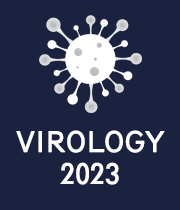Co-Transmission of Multiple Viral Genomes
A virus is a type of infectious agent that can only multiply within the body of its host. Viruses can infect bacteria, plants, and mammals, among other living organisms. Viruses are so little that they require the use of a microscope to see them, and they have a very simple structure. Viruses are mobile genetic elements that rely on the metabolic and biosynthetic machinery of their hosts to reproduce. Viruses are unable to perform their life-supporting tasks outside of the host cell. Because they lack ribosomes, they must rely on the ribosome machinery of the host cell to convert their mRNA into proteins. Viral genomes are made up of either DNA or RNA, but never both. Double-stranded or single-stranded DNA and RNA molecules can be linear or circular, segmented (made up of numerous pieces of nucleic acid) or non-segmented. The word genomic segment has a complicated definition, as it is used for both nomenclature and historical purposes.
- DNA virus
- Genome Organisation
- Meta-Omics
- Molecular Evolution
- RNA virus
- Viral Ecology
- Viral Genetics

